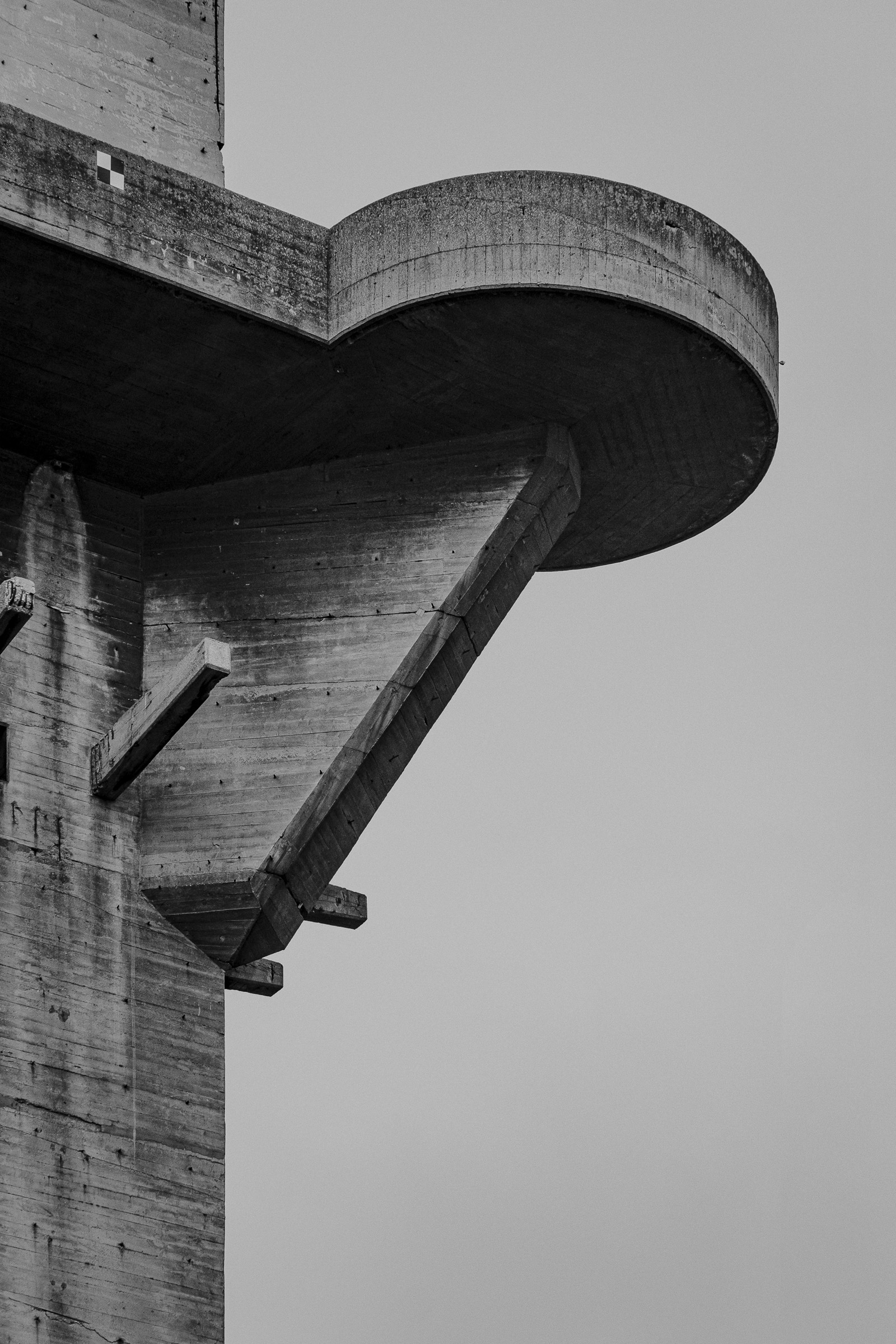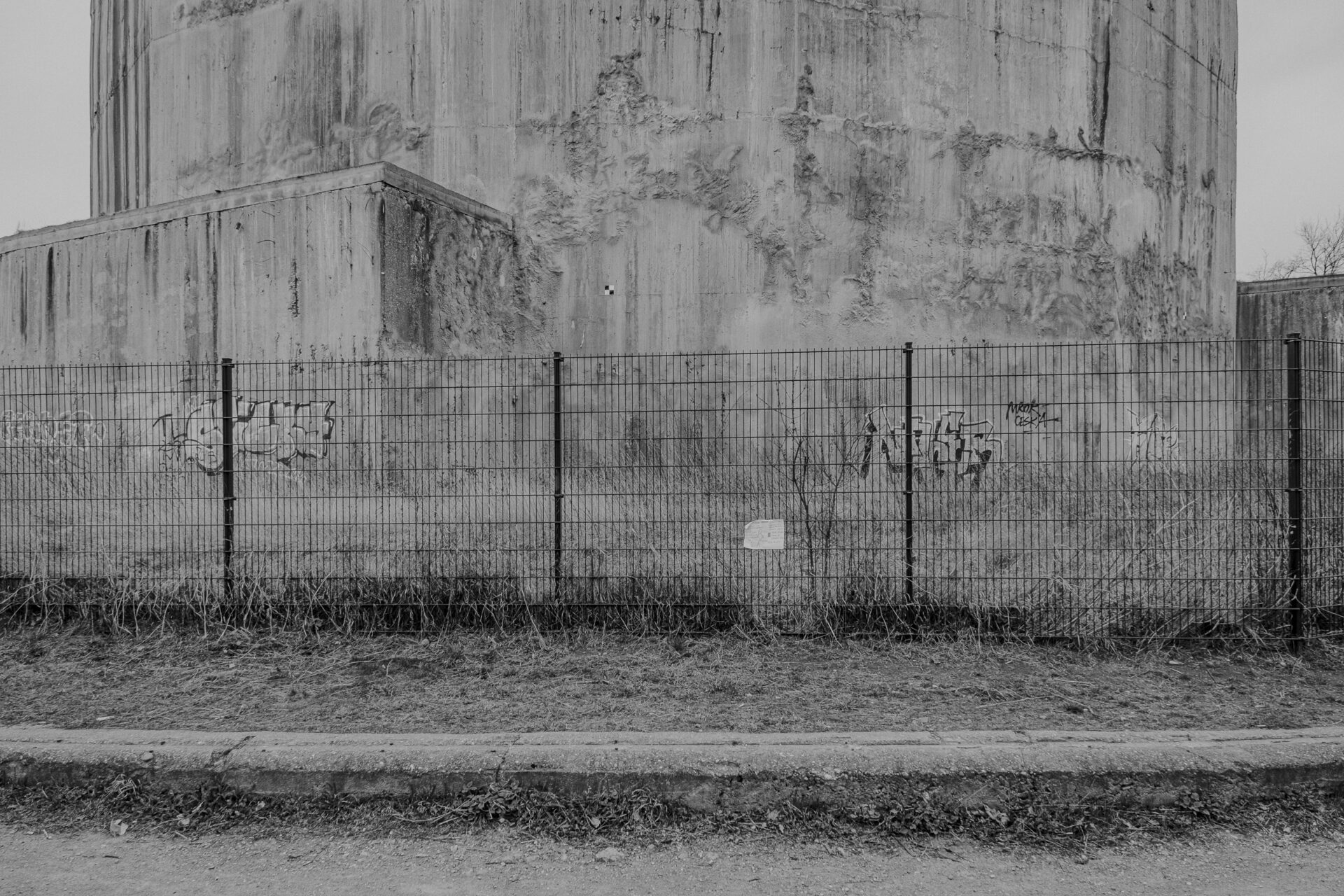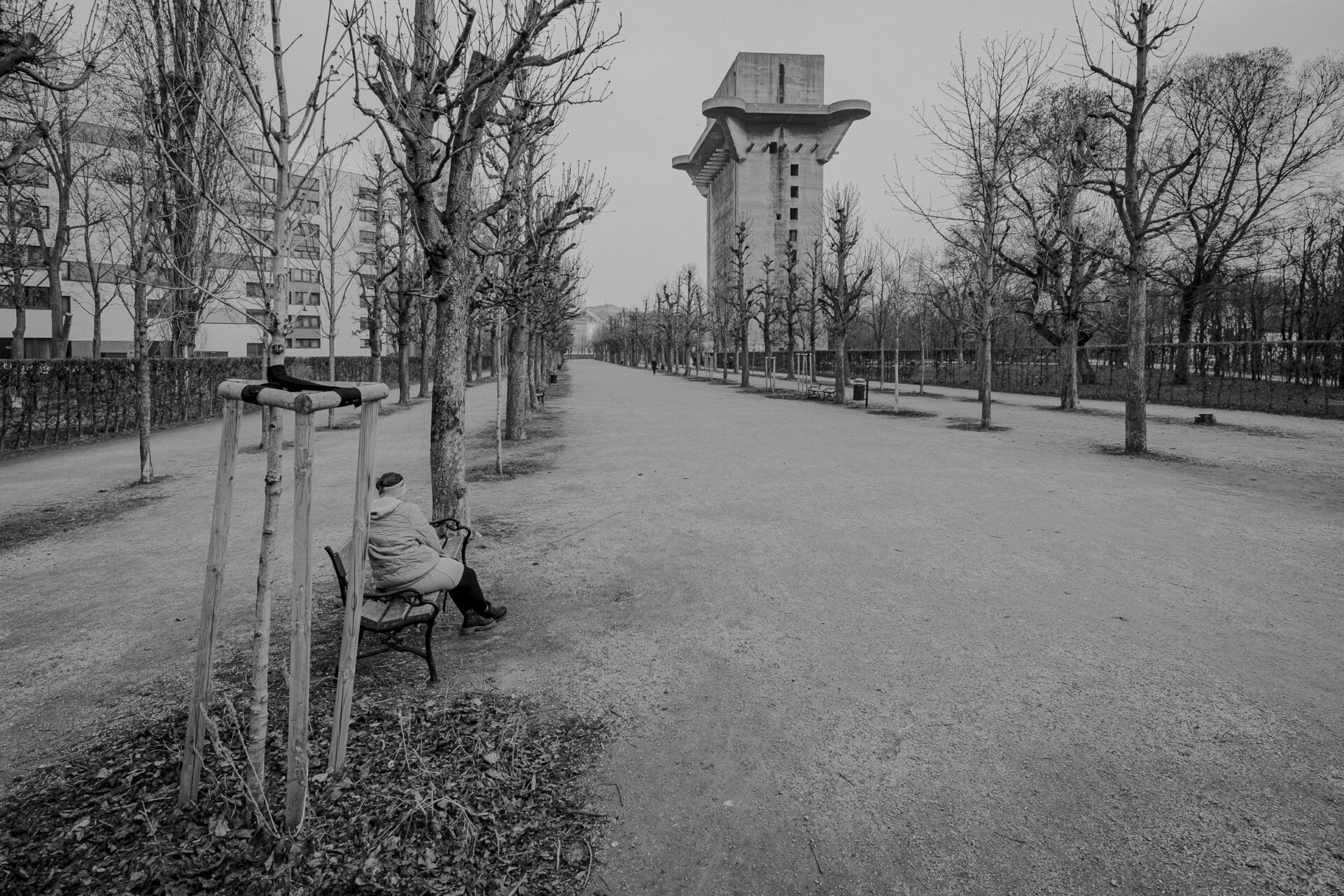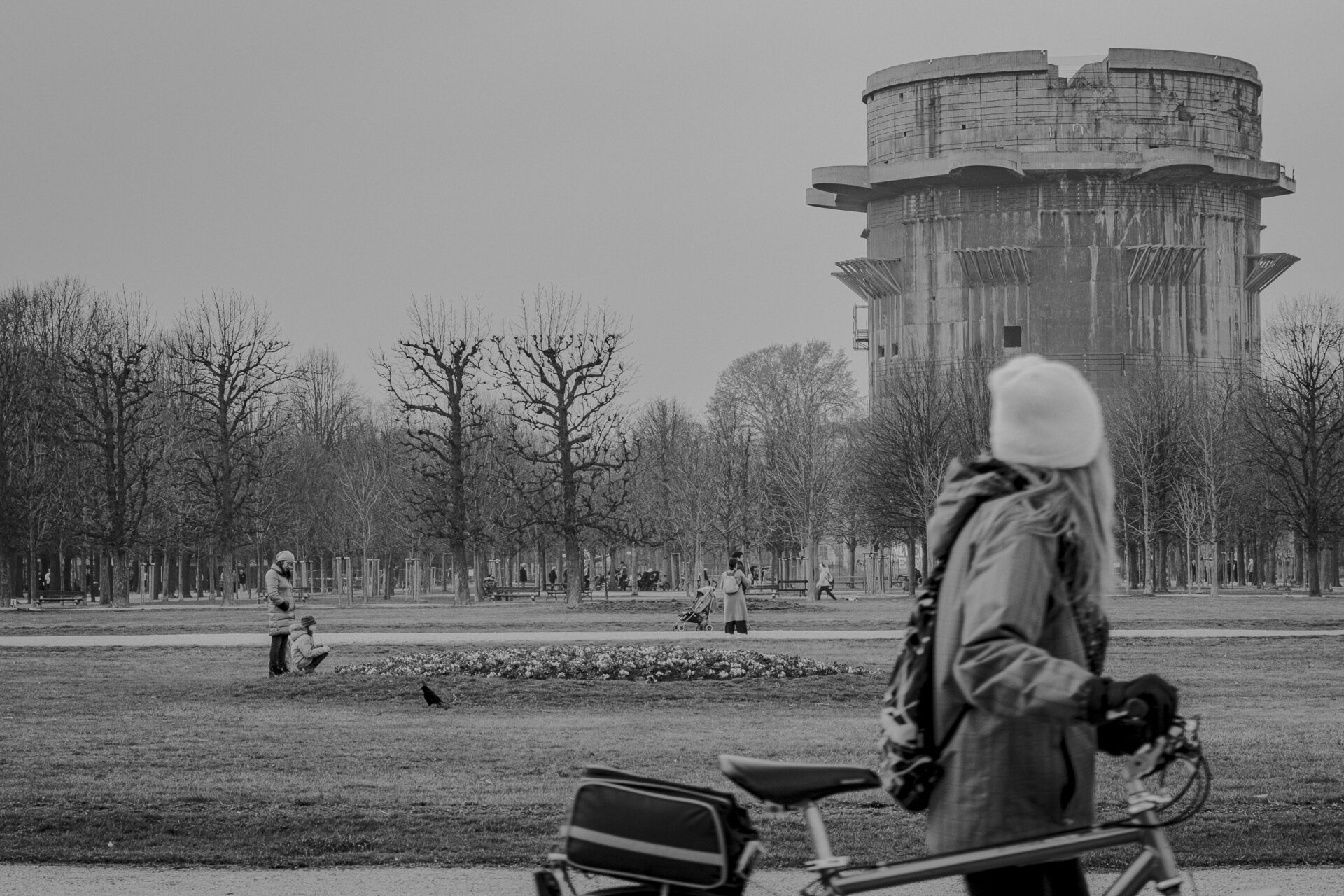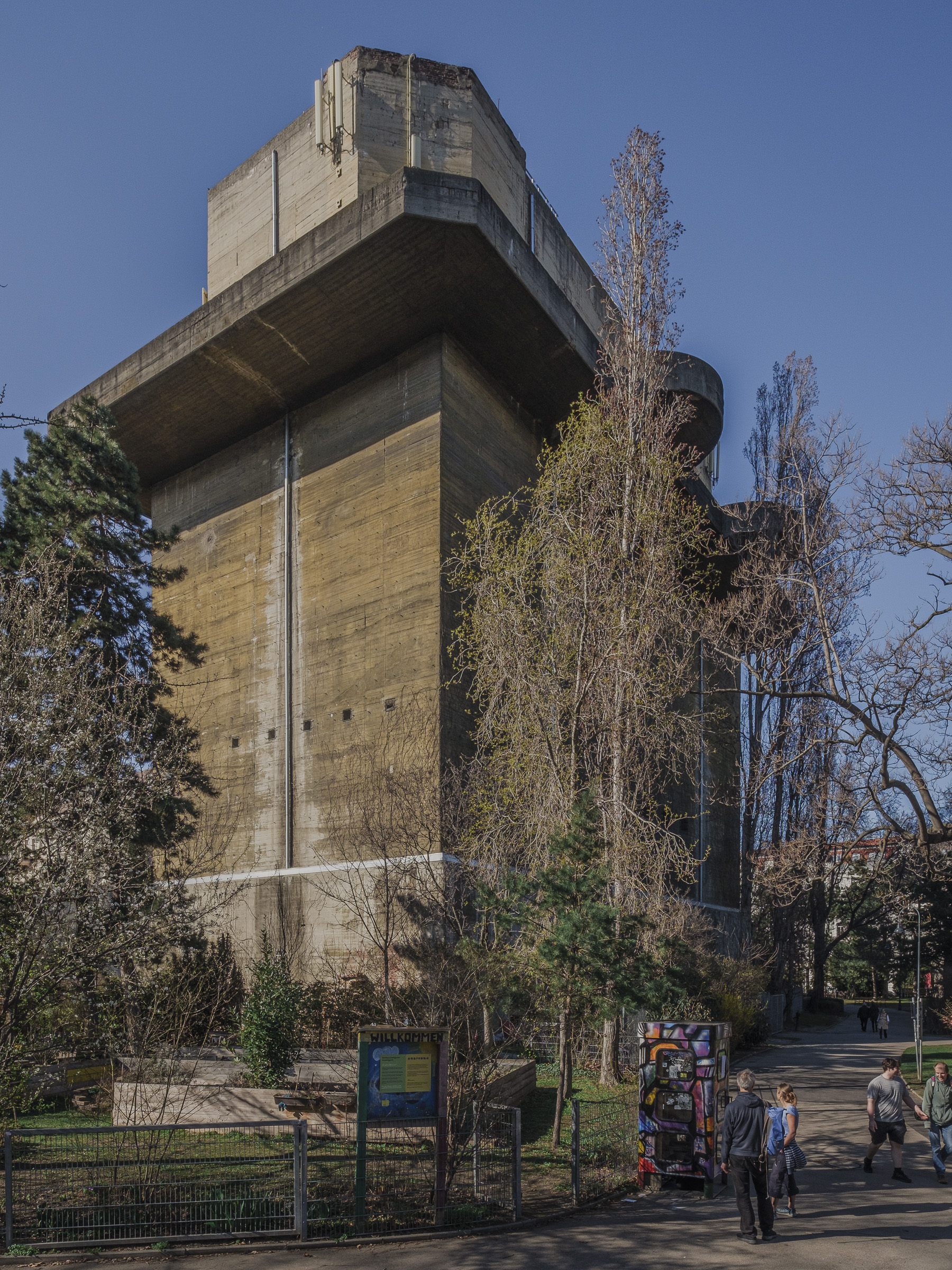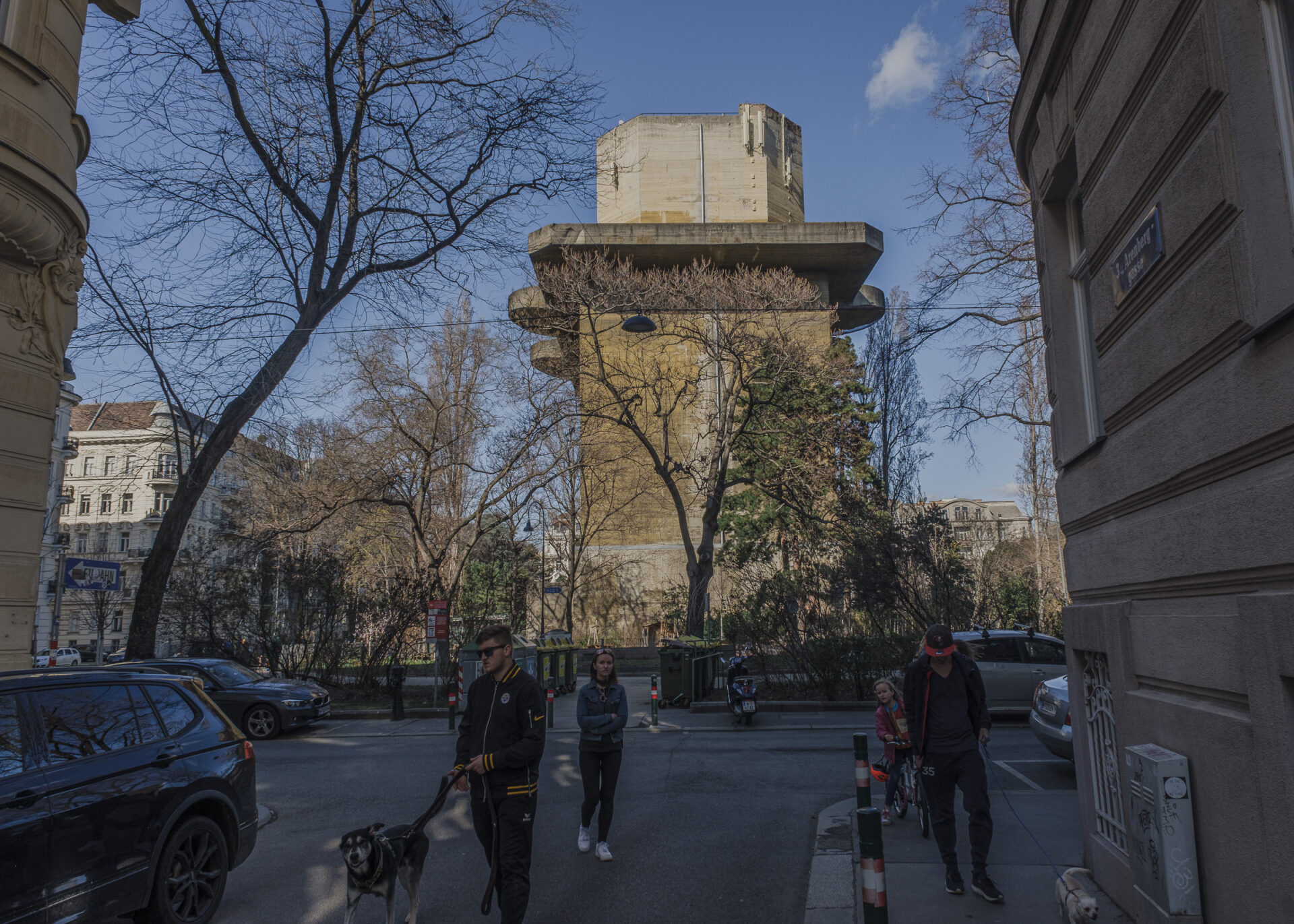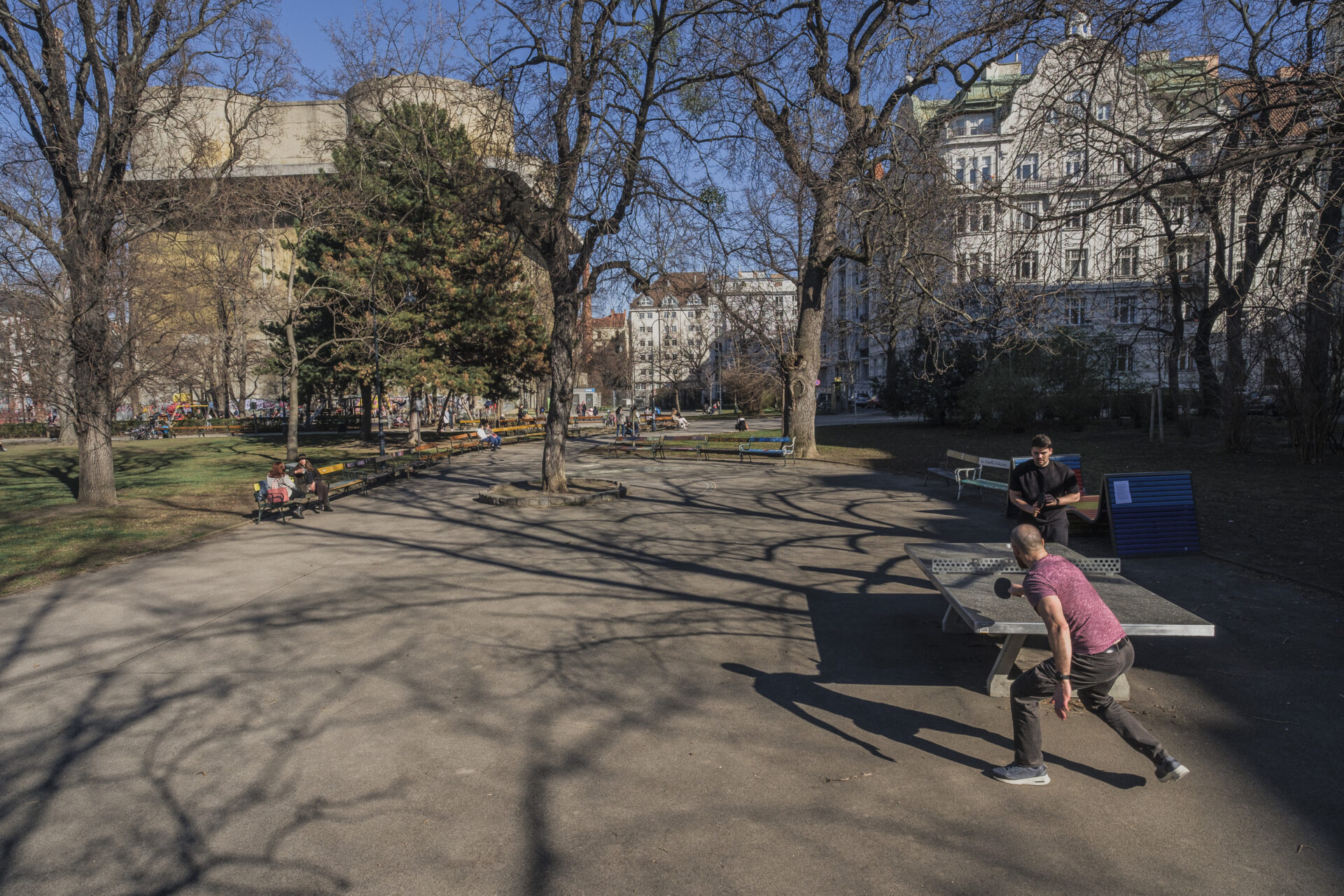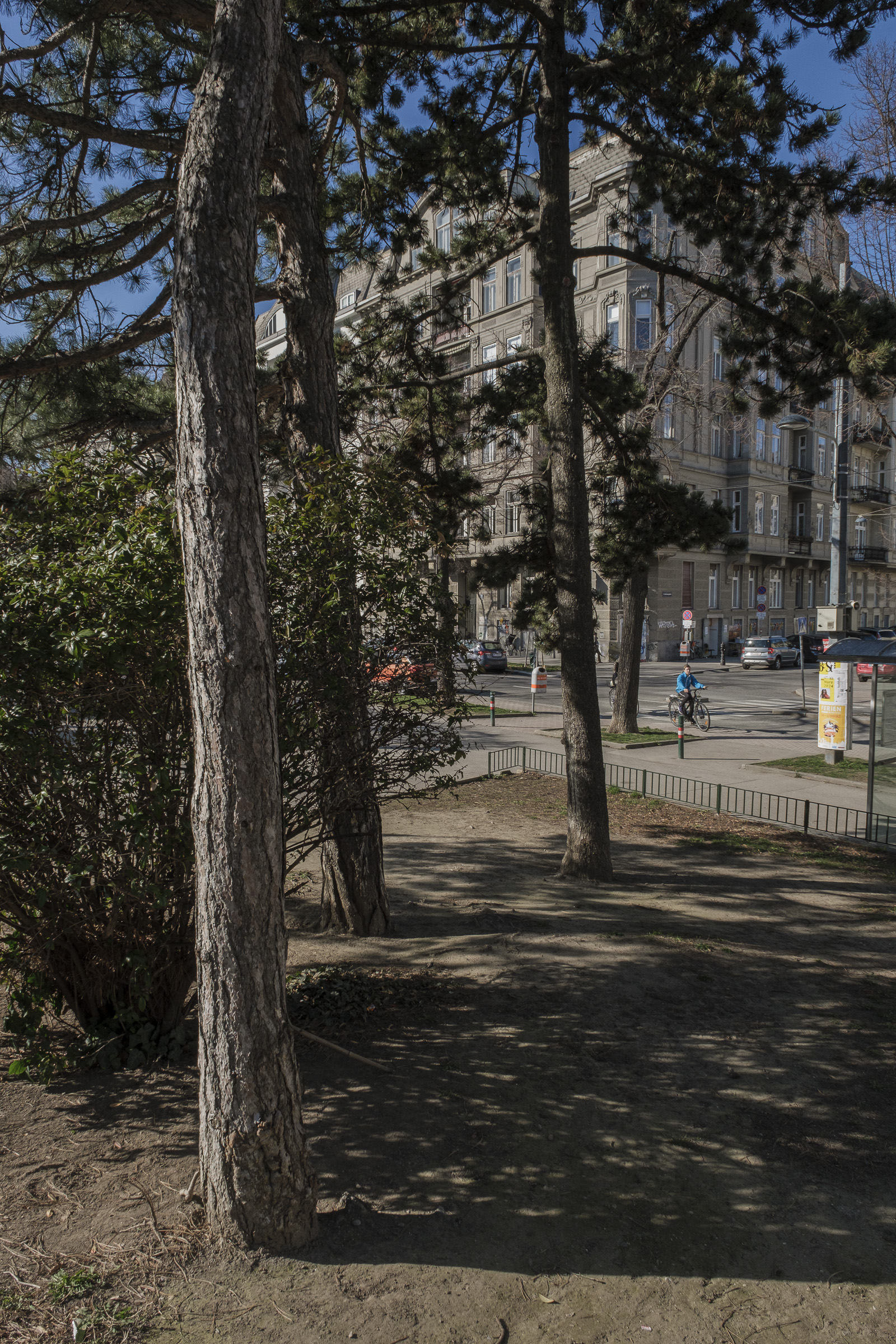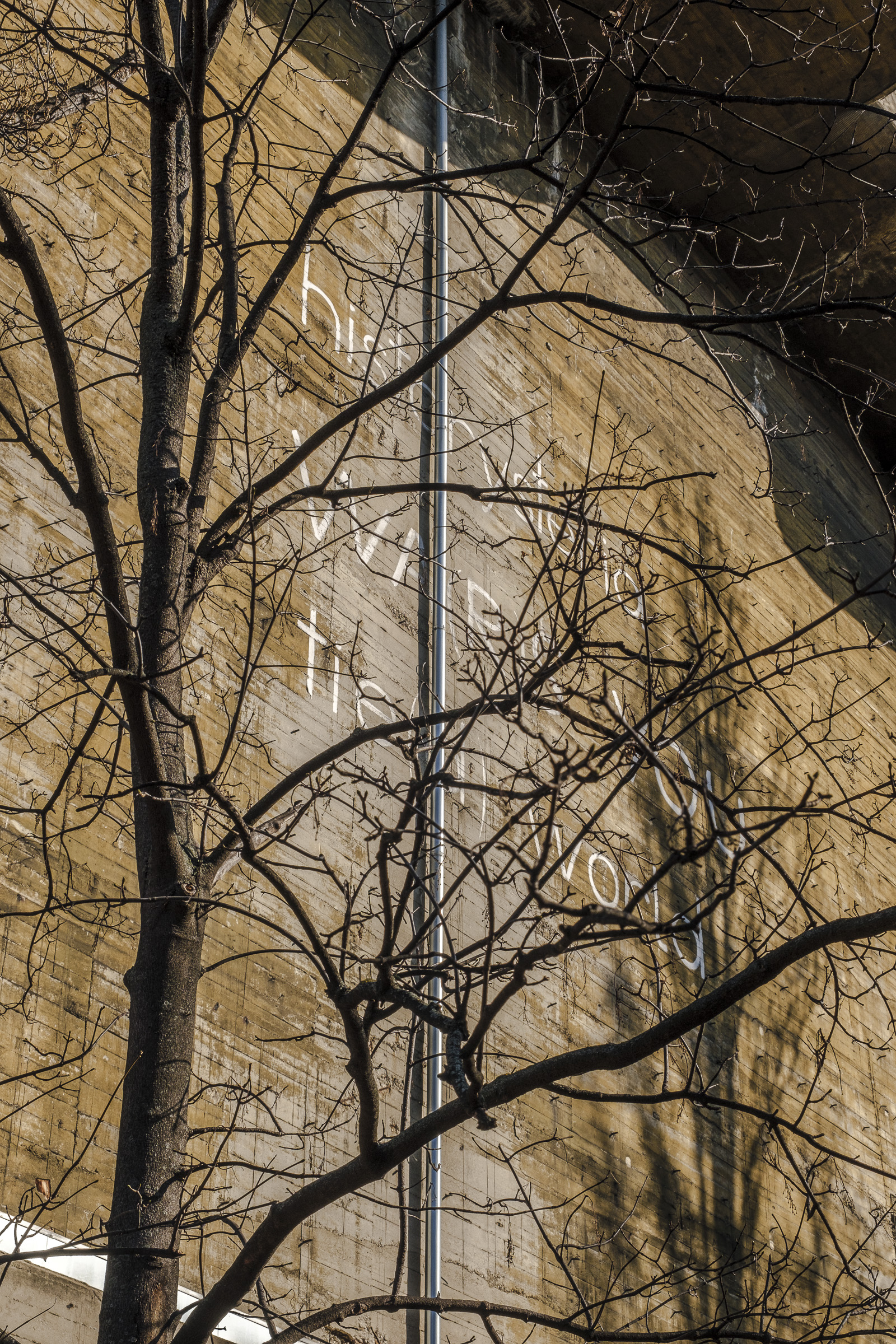
Flak Towers in Vienna, Austria
Six anti-aircraft flak towers were built by forced labour under Nazi control in Second World War Vienna. With walls of reinforced concrete poured over three metres thick, the towers’ form took after the central keeps of medieval castles and provided shelter for thousands of civilians during Allied bombing.
The towers were built quickly. So urgent was their completion to Hitler that he ordered the German railways to re-timetable the network to hasten deliveries of concrete, steel and timber to flak tower construction sites – in Berlin and Hamburg as well as Vienna.
But long after the war’s end, the flak towers have proven almost impossible to remove, with three pairs of G (‘combat’) and L (‘lead’) towers dotting the city’s parks and neighbourhoods, impervious to demolition. Life now bends around the towers — sometimes with a jarring levity if you happen to contemplate their past. One tower has become an aquarium and climbing wall; nearly all of them are set amongst sports equipment or playgrounds.
I visited the flak towers over a weekend as winter turned to spring earlier this year. In Augarten, seniors wore hats and scarfs as they played boules on a gravel path at the base of the G tower. At the nearby L tower, 20-somethings played beach volleyball and parents and children walked their dogs. The next day, at Arenbergpark, the year’s first warm sun painted two other flak towers a sandstone shade. Teenagers played basketball at the base of the G tower while children climbed play equipment. At the L tower, a young woman was training her dog in a dog park lined with bark chippings, while an older couple were opening the gate to a community garden. Between the two towers, the plinking of a table-tennis game played out and couples picnicked on the grass.
Is this architecture or geology? A cultural object humans bend and control, or an impermeable landmark around which culture forms. When does it stop being one and start being the other? Click an image to open in lightbox.
Six anti-aircraft flak towers were built by forced labour under Nazi control in Second World War Vienna. With walls of reinforced concrete poured over three metres thick, the towers’ form took after the central keeps of medieval castles and provided shelter for thousands of civilians during Allied bombing.
The towers were built quickly. So urgent was their completion to Hitler that he ordered the German railways to re-timetable the network to hasten deliveries of concrete, steel and timber to flak tower construction sites – in Berlin and Hamburg as well as Vienna.
But long after the war’s end, the flak towers have proven almost impossible to remove, with three pairs of G (‘combat’) and L (‘lead’) towers dotting the city’s parks and neighbourhoods, impervious to demolition. Life now bends around the towers — sometimes with a jarring levity if you happen to contemplate their past. One tower has become an aquarium and climbing wall; nearly all of them are set amongst sports equipment or playgrounds.
I visited the flak towers over a weekend as winter turned to spring earlier this year. In Augarten, seniors wore hats and scarfs as they played boules on a gravel path at the base of the G tower. At the nearby L tower, 20-somethings played beach volleyball and parents and children walked their dogs. The next day, at Arenbergpark, the year’s first warm sun painted two other flak towers a sandstone shade. Teenagers played basketball at the base of the G tower while children climbed play equipment. At the L tower, a young woman was training her dog in a dog park lined with bark chippings, while an older couple were opening the gate to a community garden. Between the two towers, the plinking of a table-tennis game played out and couples picnicked on the grass.
Is this architecture or geology? A cultural object humans bend and control, or an impermeable landmark around which culture forms. When does it stop being one and start being the other?

